Using Leca for plants as a growing medium has benefits you should consider. This semi – hydroponic growing system is designed to improve oxygen flow around plant roots and maintain constant nutrient availability without traditional potting soil. The Clay pebbles provide a suitable soilless substrate for many house plants.
What is LECA? Leca is baked clay balls. Clay is put through a manufacturing process at very high heat. The resulting product is baked clay balls of various small sizes permeated with air pockets. These baked balls are called Lightweight Expanded Clay Aggregate (LECA is the acronym).
Leca clay balls provide an airy substrate that allows constant controlled access to water and nutrients the plant needs. The roots sip water and liquid nutrients off the clay balls as they need it. This reduces root rot and eliminates soil fungus problems in your plant pots.
Plants that need a lot of oxygen around their root ball to maintain good plant health, which include many tropical indoor plants, are especially good candidates for growing in clay pellets.
Leca cannot compress. The air pockets are always there for the roots to breathe into. And this semi-hydroponic system waters itself with only occasional refills from you.
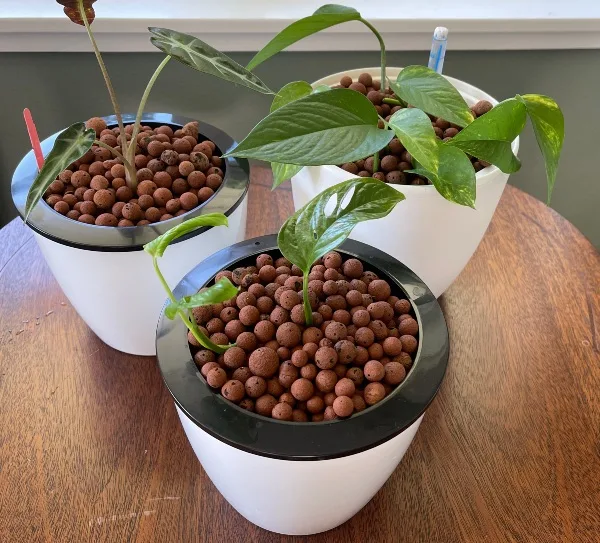
Why is LECA Useful For Growing Plants?
Traditional soils and over watering cause a lot of problems when growing tropical houseplants. Excess moisture in the soil attracts and harbors fungus gnats and molds.
Do you have trouble with root rot, yellowing leaves, or aphids or fungus gnats? If so, you may benefit from using Leca rather than growing plants in soil.
Leca Growing systems offers these advantages:
- LECA is a self managing system without soil. Leca eliminates soil borne pests and molds in your plants.
- LECA offers More oxygen to the plant and encourages healthy roots.
- In LECA, water and nutrients are taken up as the plant needs them.
- It’s very easy to set up a plant in LECA if water roots are already established.
- Much less maintenance for the plant parent. The watering schedule and nutrient balance to grow healthy plants is taken care of in LECA.
Disadvantages Of LECA:
- There is some initial cost. You must purchase the liquid nutrients, LECA balls and a pot with proper drainage and a bottom reservoir system to hold the water and liquid fertilizer.
- There is a process to getting started with the clay pellets growing system. The clay dust must be rinsed off and LECA boiled before using. The pot has to be set up and the plant has to be properly prepared for success.
- The transition from growing in soil to LECA requires the plant to grow water roots to absorb the liquids that will sustain it. Removing a plant from soil and moving it to a LECA system requires the roots are scrubbed VERY clean. The shock and damage to the root system may kill it before it adapts. For best results, transition only small starts from soil to LECA.
- Taking Sensitive plants like Calatheas or the finicky Goldfish Plant already growing and established in soil to a LECA system is a bad idea. They will have little chance of success.
For best success in transitioning a large plant from soil to LECA, take a cutting from the mother plant and place cutting in water until it grows some water roots. This gives the plant the best chance of a smooth transition.
After the plants acclimate to their new environment they will grow very well in this soilless medium.
Learn more on how to prepare for and grow your plants in LECA
Watch Kayti pot a water propagated pothos and a soil propagated Monstera into LECA.
Learn more about Growing in LECA
The Contented Plant
Plants that Do well In LECA:
This is an incomplete list of plants well suited to LECA. As a rule of thumb, most plants will do fine in LECA once established with a proper nutrient balance for the plant
The listed plants below are those that thrive in an oxygen rich medium around their root systems.
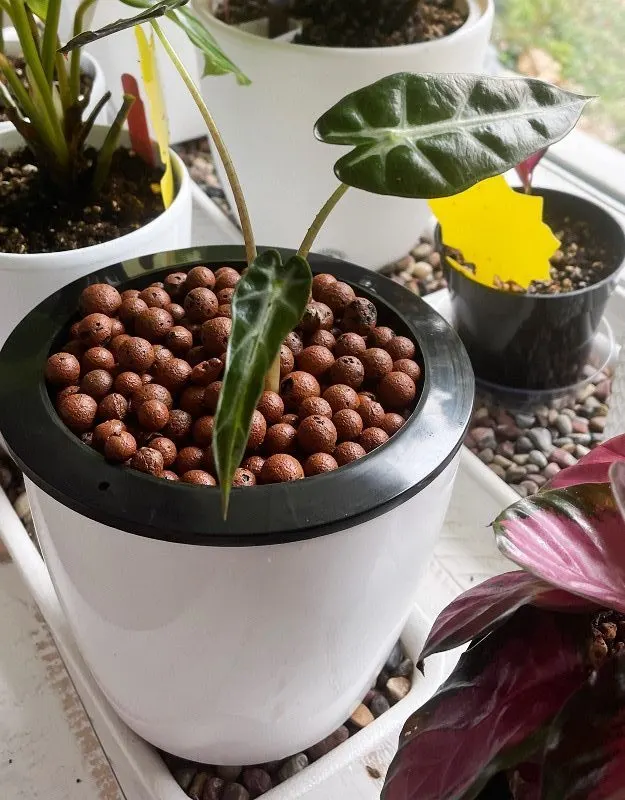
Epiphyte Plants:
Leca pebbles create air gaps in the plant pot that allow roots to breathe. This is especially beneficial to epiphytes like orchids or Hemi epiphytic like Monsteras. Their roots MUST have a lot of oxygen.
Epiphytes are called air plants. Their life cycle requires them to put out roots into the air and climb to survive in the wild. In a plant Pot they need a LOT of oxygen in their roots to thrive. LECA is one substrate that will provide that for them.
Providing a substrate with lots of available oxygen is critical for these types of plant roots. LECA is one way to achieve that.
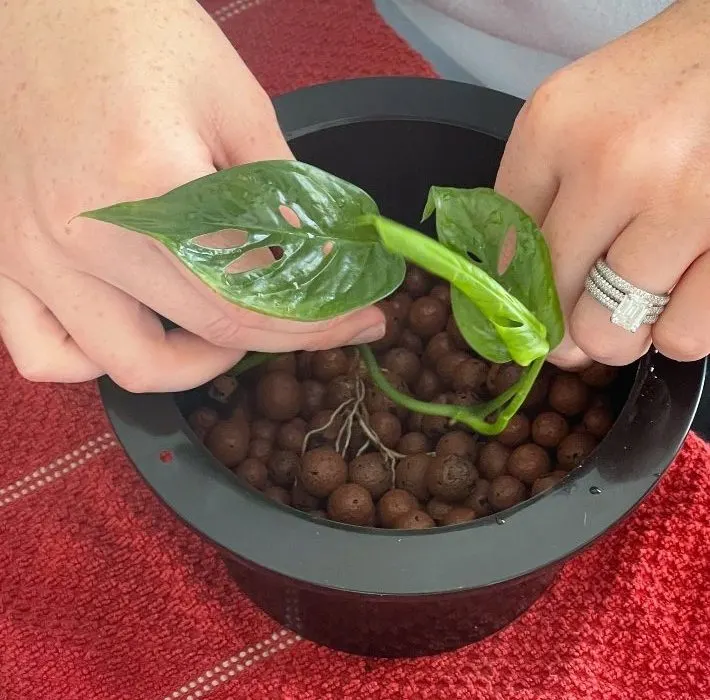
Aroids To Grow in LECA:
If you have an aroids plant from the plant family Araceae it is a good choice for growing in Leca. Here’s a list of cultivars from this popular genus.
- All Pothos vines
- Anthuriums
- All Philodendrons like the HeartLeaf Philodendrons
- Alocasia
- ZZ plants
- Peace Lilies
Other Plants…
Snake plants Also grow really well in Leca clay balls. So do many other plants. You have to decide if you want to take the risk. this is a great substrate and growing system for busy people and travelers.
It may be worth a try with your favorite special plant if you want to risk it. Best to take a cutting and water propagate it if that is possible. Then plant in LECA. Much less stressful.
To Summarize: With few exceptions all houseplants can grow well in LECA. If you have a water propagation of almost any plant LECA is a great way to plant it.
What are those exceptions? Plants adapted to very little oxygen in their roots will probably prefer a very small clay ball environment or soil to keep the roots wetter and less oxygenated.
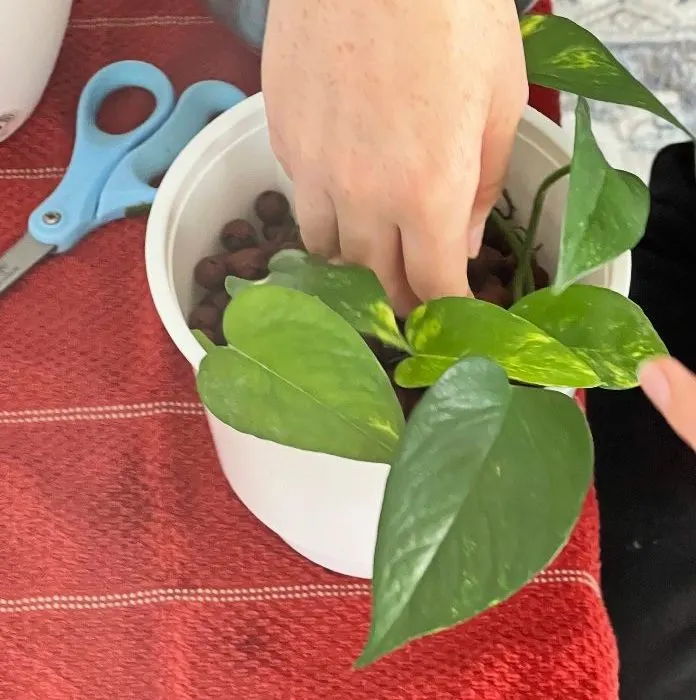
For soil planted large plants the transition can be done but will cause some stress. It just depends on what your lifestyle and plants do best with.
Follow Us:
Find us on YouTube, Instagram , Pinterest and TikTok! We love to Plant chat. We also comment, like and occasionally share your content to our daily stories. We’d love to see your plants. Share your joy in your houseplants. Happy Planting!
Recent Posts:
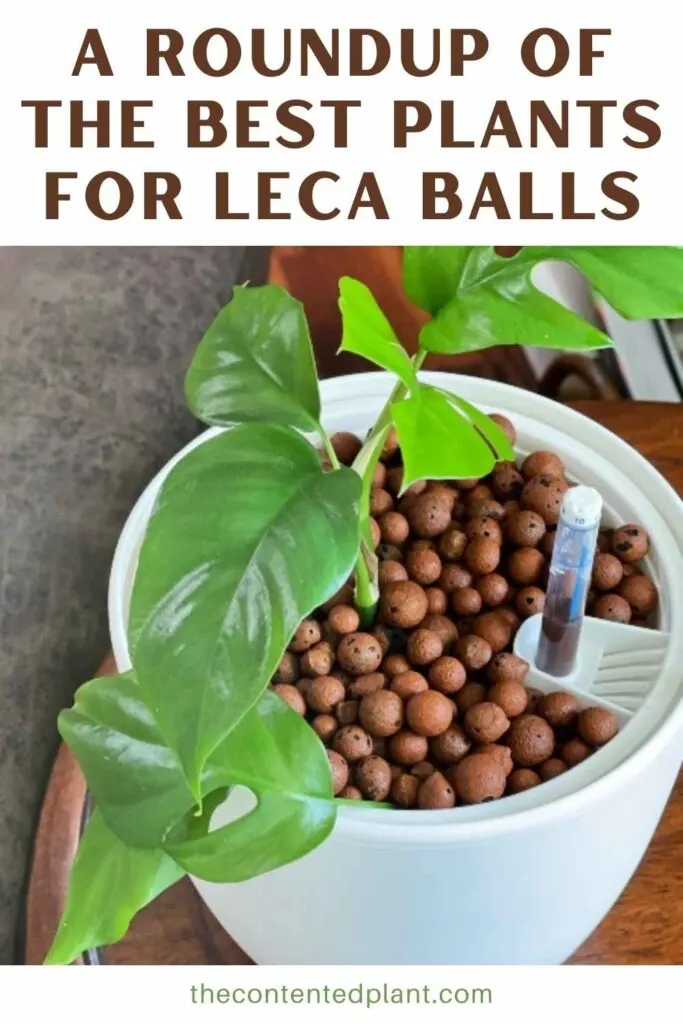

Growing in Leca Balls-Pros and Cons - The Contented Plant
Saturday 16th of July 2022
[…] Our Posts on which Plants grow best in LECA, Best Leca Plant pots, and how to prepare and maintain a plant in […]